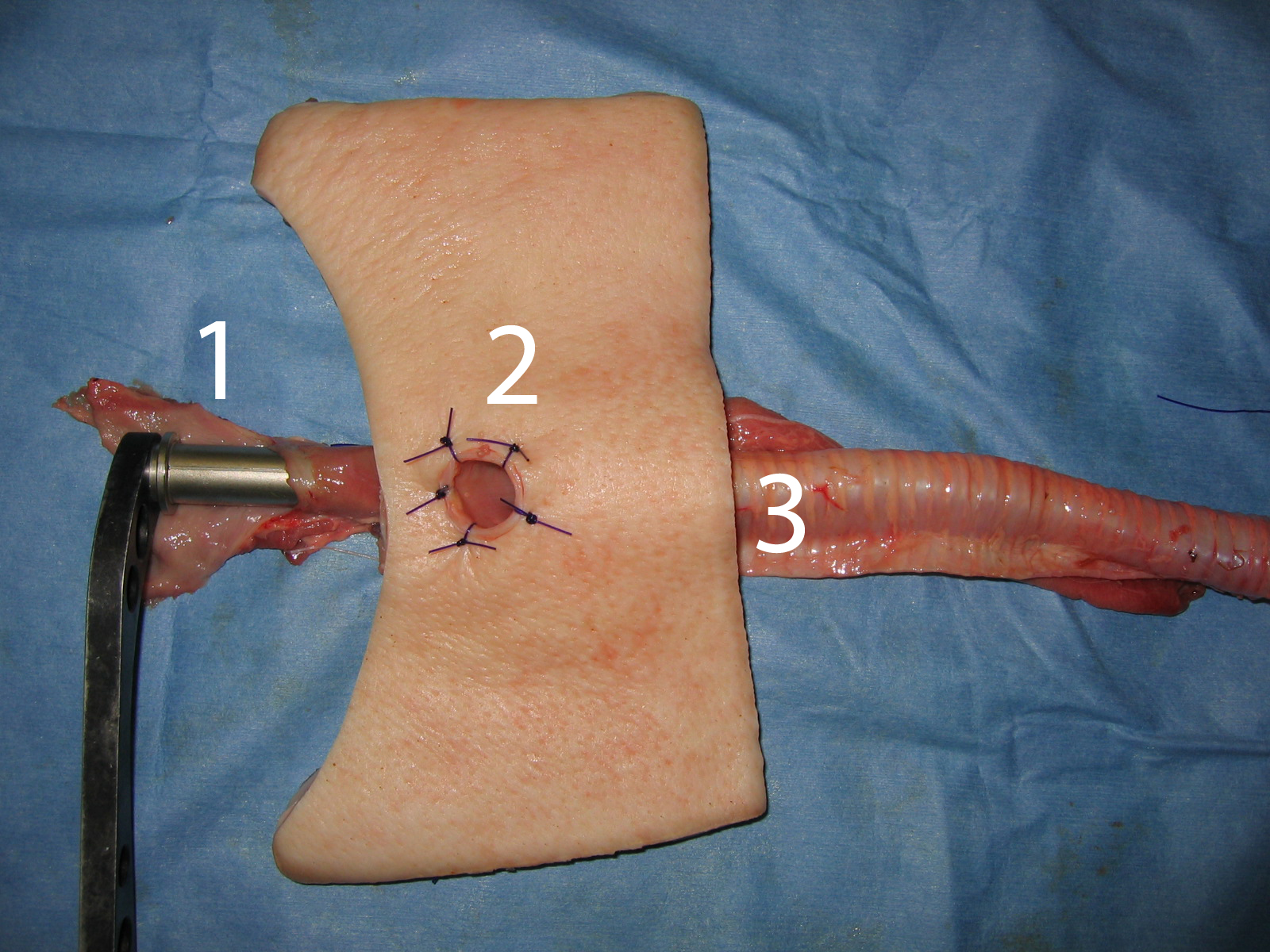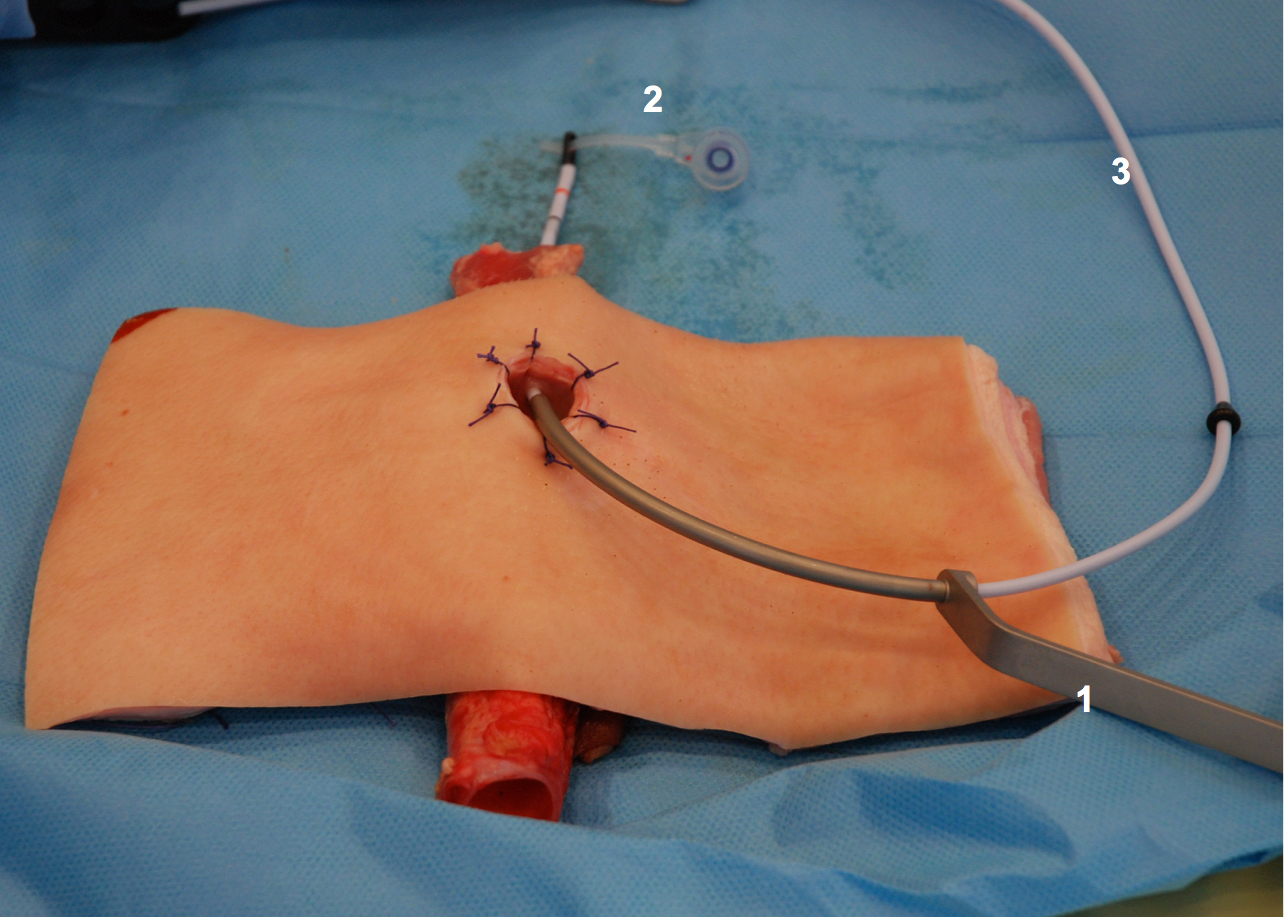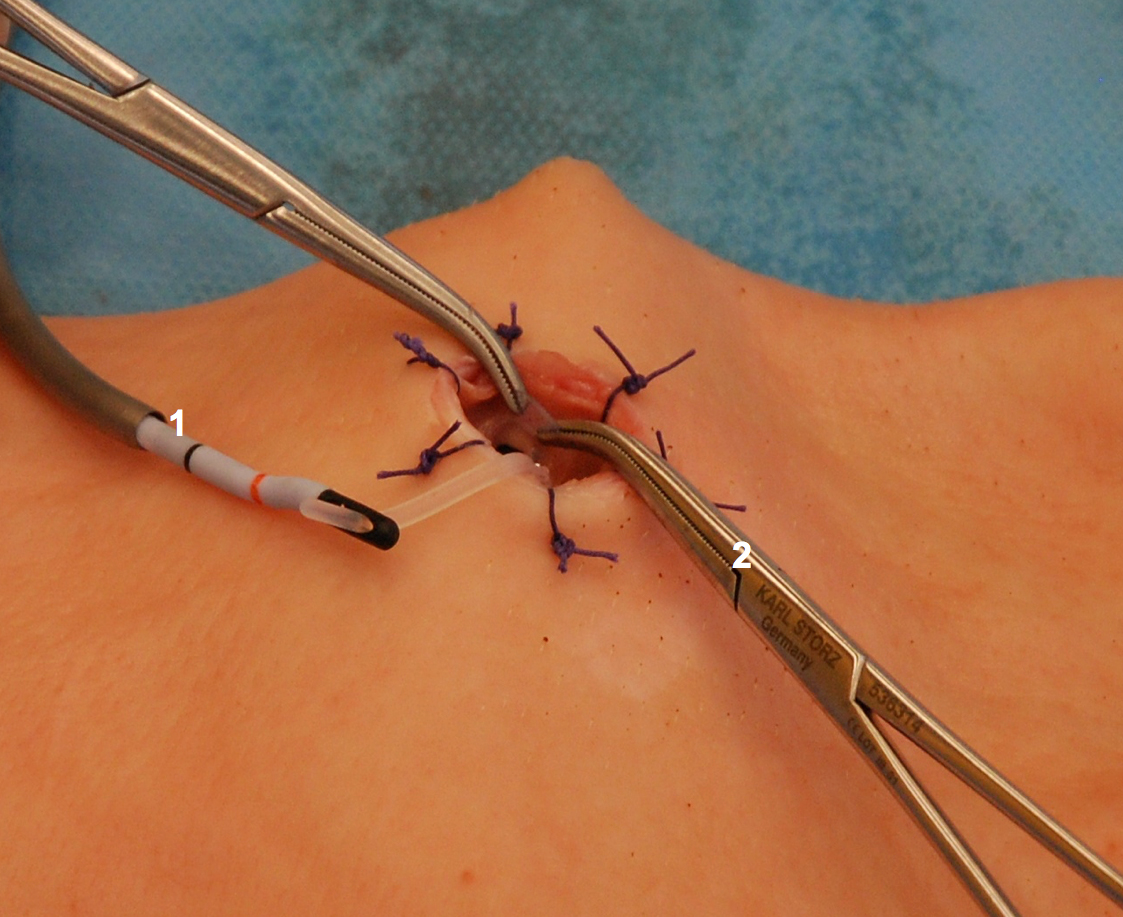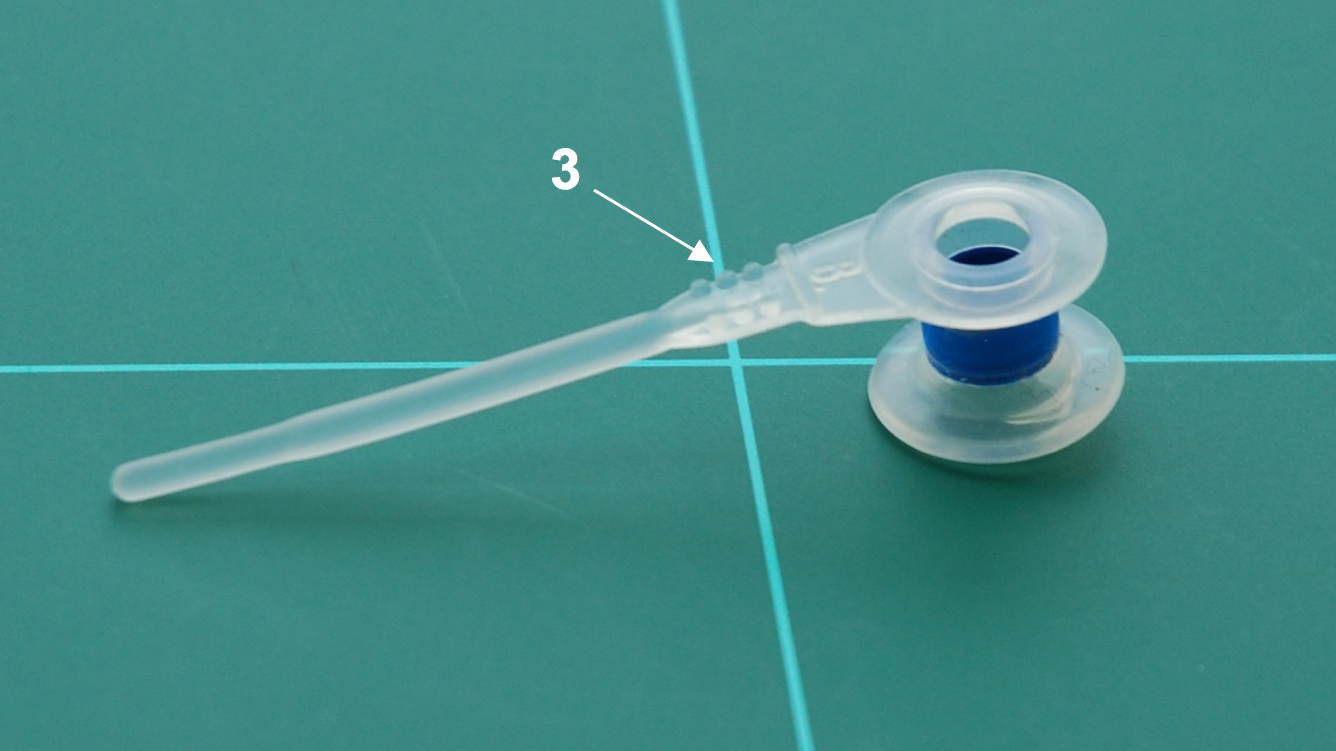Shunt creation using the puncture trocar and pharynx protector after Hilgers
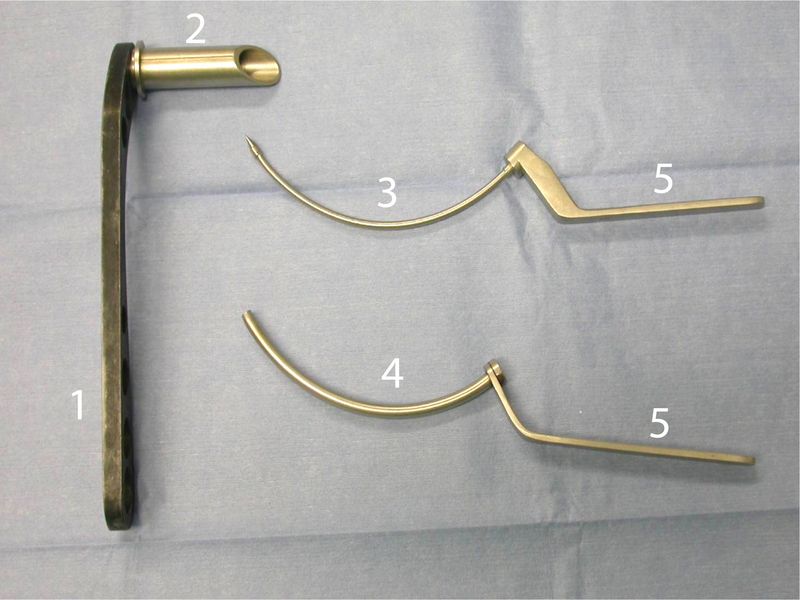
The pharynx protector after Hilgers consists of the grip (1) and a protector sleeve (2).
The protector sleeve can be inserted on the left or right of the grip, depending on how the pharynx protector is used.
The puncture trocar after Hilgers consists of a pointed arched trocar (3) for the puncture and an outer tube that fits around it exactly (4), both attached to a grip (5).
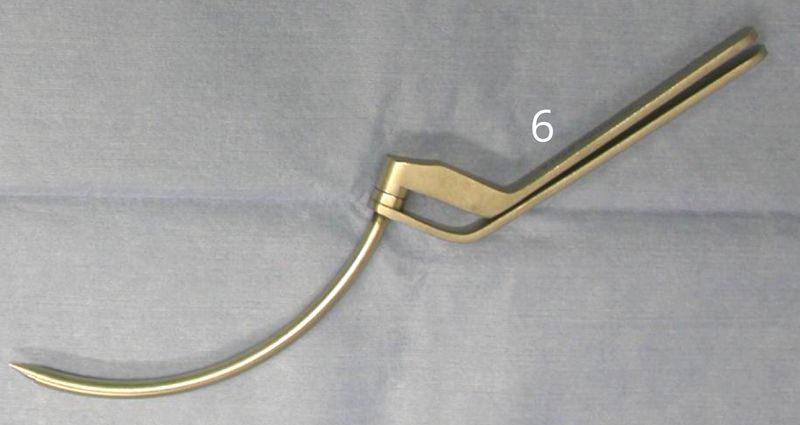
The trocar for the puncture is inserted in the tube so the grips are horizontal and parallel (6).
The shunt creation with the puncture trocar and the pharynx protector after Hilgers is demonstrated in the following on a surgical model (no laboratory animals involved)
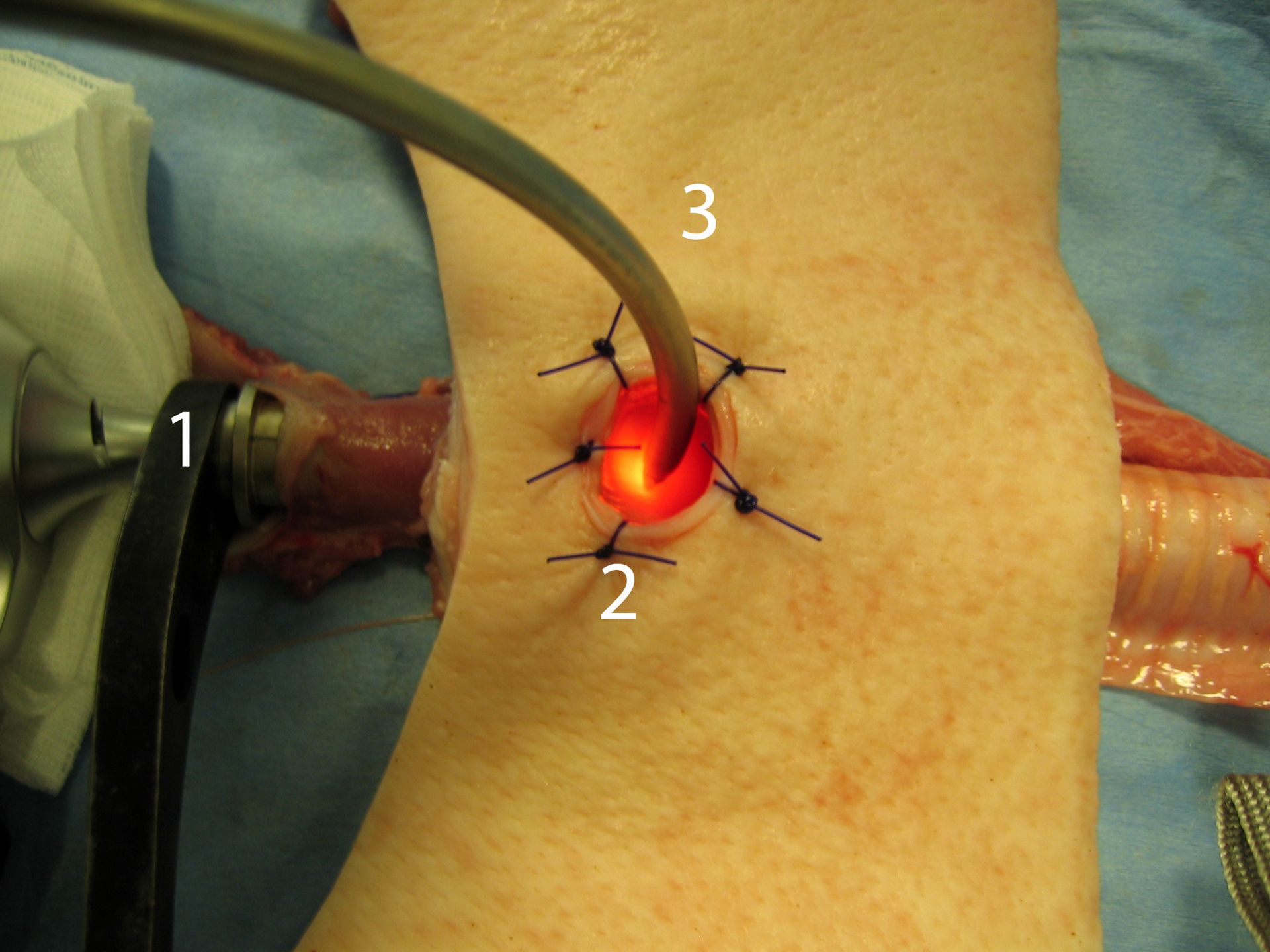
In the picture, a light is inserted in the pharynx protector, and the light can be seen on the Pars membranacea of the trachea (2).
The trocar (3) is now fed through the tracheostoma and placed approx. 1 cm caudal of the cranial edge of the tracheostoma. The tip of the trocar must be opposite the opening of the pharynx protector so the puncture can be made safely in the lumen of the pharynx protector
A sterile Provox® Guidewire is prepared. It fits through the outer tube of the puncture trocar.
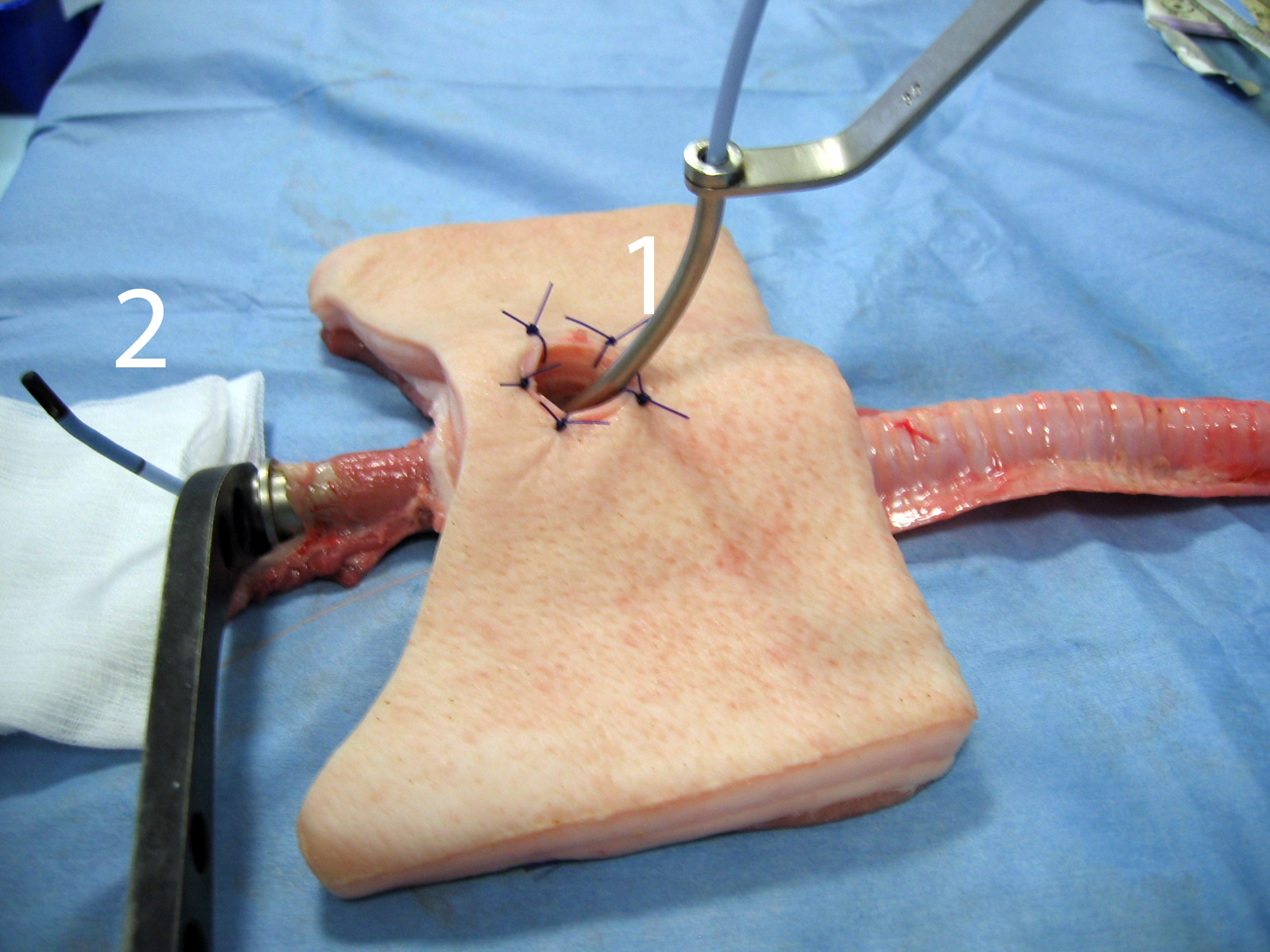
The outer tube (1) is left in place.
The guide wire (2) is now fed through it and into the open pharynx.
When the guide wire is clearly visible in the pharynx, the pharynx protector is removed, as otherwise it would prevent the voice prosthesis from being drawn in.
Note: A sterile Provox 2 prosthesis is now also used for the primary insertion. The Provox 1 prosthesis, which was originally intended for that purpose, will shortly be withdrawn from the market

